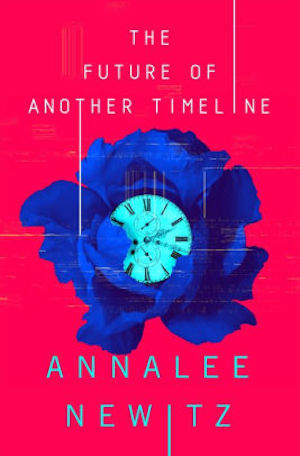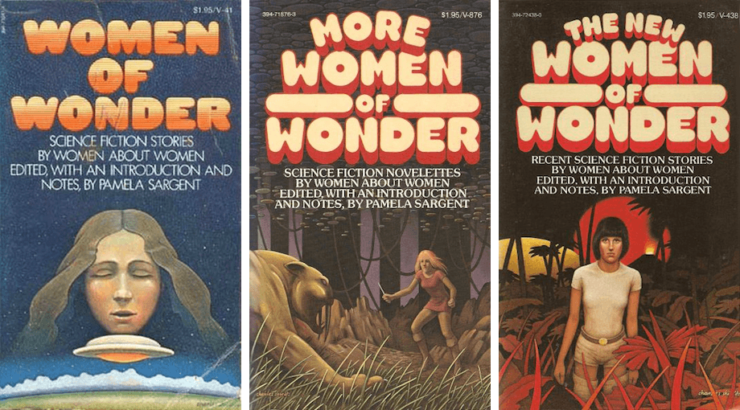The 1970s may have been an era when most of the interesting new writers were women, but you sure would not know it from that era’s Best SF of the Year anthologies. These were almost always overwhelmingly male .
Women pushed back. They managed to fund and publish their own anthologies, filled with notable works by women—anthologies like 1976’s Aurora: Beyond Equality, edited by Vonda N. McIntyre and Susan Janice Anderson, and Virginia Kidd’s 1978 Millennial Women. Which brings us to Pamela Sargent’s Women of Wonder anthologies.
Sargent had been shopping the initial anthology around for several years without luck. Publishers generally felt the market for such an anthology would be small. She got a lucky break when Vonda N. McIntyre asked Vintage Books how it was that despite having done all-male anthologies, they’d never published an all-women one. Vintage was interested in the idea, provided that someone not on their staff did the editing. McIntyre introduced Sargent to the folks at Vintage and the rest is SF history.
Women of Wonder could have stood on its own (and given the prejudices of the time, might have been intended as a one-off). The volume provided a short history of science fiction, a fine essay whose main flaw was that it came to an abrupt halt in 1974 (possibly due to the fact that it was written in 1974). The rest of the book was an assortment of prose pieces, plus one poem. With the possible except of Sonya Dorman’s “The Child Dreams,” all of the pieces included were reprints, arranged in order of publication. The oldest work was Judith Merril’s 1948 “That Only a Mother,” the most recent McIntyre’s 1973 “Of Mist, and Grass, and Sand.”
Sales! Success!
Buy the Book


The Future of Another Timeline
Success demands a sequel. Sargent eschewed recapitulation. The second volume, More Women of Wonder (1976) also drew on both vintage and recent works, but focused on novelettes. While everyone I have asked agrees that novellas are the optimum length for science fiction stories, novelettes are almost as good.
The New Women of Wonder (1978) rounded off the series by focusing on what were then recent works, like Russ’ “When It Changed,” and Tiptree’s “The Women Men Don’t See.” Works that are now classics.
Women of Wonder wasn’t the first all-women SF anthology to appear, but it might have been the first one to reach the University of Waterloo’s bookstore , where I snapped up a copy. Unfortunately, three books and three years into the series, it seemed to be at an end.
[Thematically appropriate music here…]
Until 1995, that is! In 1995 there was a two-volume follow-up to the original series. Women of Wonder: The Classic Years (1995) featured older works, many of which had appeared in earlier WoW anthologies. Women of Wonder: The Contemporary Years (1995) drew on the body of speculative fiction published in the seventeen years since The New Women of Wonder. Although The Classic Years sifted a span twice as long as The Contemporary Years, both volumes are of similar length. This may be a reflection of the greater number of women active in the field in recent years.
When I reread these books a few years ago, I was worried that time might have been cruel to the stories, that social progress might have stranded these works on the other side of a vast gulf. Not to worry! It’s not as if women are now getting equal pay, or even useful pockets. If anything, we’ve regressed. Issues that were pressing half a century ago are still pressing; those stories that comment on those issues are, for the most part, still quite relevant.
Rights issues make it unlikely that these books will be reprinted. When last I talked to the editor, she had no plans to continue the series. But there have been and will be other such anthologies, works that I am sure that I or some other Tor.com reviewer will visit.
In the words of Wikipedia editor TexasAndroid, prolific book reviewer and perennial Darwin Award nominee James Davis Nicoll is of “questionable notability.” His work has appeared in Publishers Weekly and Romantic Times as well as on his own websites, James Nicoll Reviews and Young People Read Old SFF (where he is assisted by editor Karen Lofstrom and web person Adrienne L. Travis). He is surprisingly flammable.










